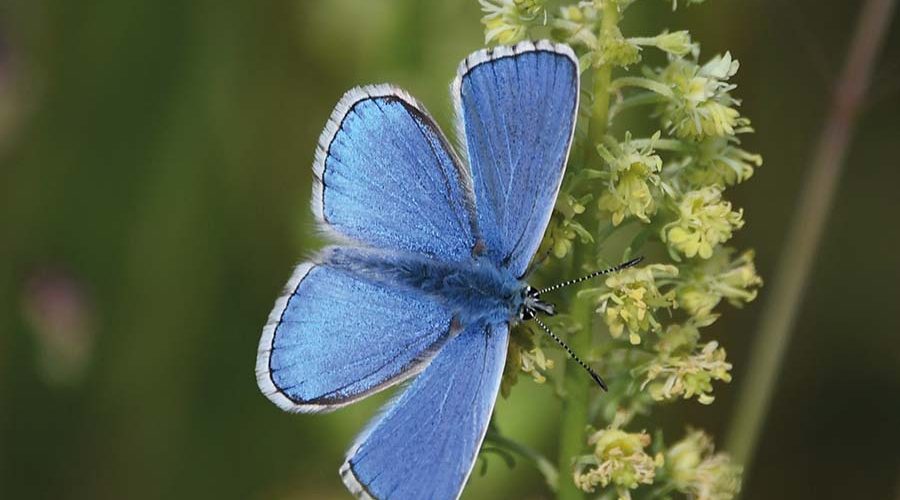Veronica Craddock, Infrastructure and Environment Strategy Lead for the South Downs National Park Authority, talks to PSBJ about embracing nature-based solutions to create a healthy environment for all to enjoy.
South Downs National Park
All day, every day, nature is working invisibly to keep the environment healthy for wildlife and people. It produces all of these essential things for free: clean water, clean air, temperature/regulation, healthy soils, pollination, photosynthesis, micro-organisms and nutrient cycling, food and energy, and wonder.
However, in the UK, nature is declining at an alarming rate according to the RSPB State of Nature Report 2019. For example, 97% of UK wildflower meadows have been lost in the past 100 years; 47% of urban species have declined since 1970. Whilst at the same time, spending on UK biodiversity as a percentage of GDP has fallen by 32% from 0.034% (2008) to 0.25% (2014/5).
These parallel circumstances seem to be completely opposing; how is it that we live in a society which values nature so highly but destroys it at the same time?
Nature in urban areas
In terms of the urban environment, we know that access to natural space and a high-quality natural environment is a social and health equity issue. That there are many people in society who cannot access or enjoy the benefits of natural space due to a simple under-provision, by having limited mobility, physical barriers such as roads and railways; or through perceived social exclusion such as race or cultural issues. The effects in urban areas of poor air quality, noise pollution, urban over-heating and surface water flooding can be reduced by well-planned natural spaces and features.
The demand for natural space has been particularly brought to light as one aspect of the COVID pandemic. The People and Nature survey for England (Natural England) reported that during July 2020, 42% of adults reported that “nature and wildlife is more important than ever to wellbeing”.
So, as planners, architects, highway and road engineers, property teams, park department developers, local residents, councils and businesses – what can be done?
In the UK, there are great examples of green infrastructure-based work happening in Cambridge, Manchester and the West Midlands, but there is a long way to go before it could be described as mainstream for either developers or councils. Green infrastructure is the way forward to sustainably-designed cities and urban areas. In order to do this, we need to build multi-disciplinary land use planning into our DNA so that our designed environments can provide multiple natural benefits to society, the economy and the environment.
In the South East of England, the South Downs National Park Authority (SDNPA) has been developing a high-level strategic approach to green infrastructure planning, which arose from a 2014 study into access to natural green space in the South Downs National Park and its setting. Called the ‘People and Nature Network’ (PANN), the high-level strategy unites natural systems across 14 district and borough authorities and three counties. Although it is at a strategic level, it is designed to provide robust evidence to support local decision-making on a wide range of issues from health and wellbeing, climate change adaptation and mitigation, sustainable transport, access and recreation as well as
nature connectivity.
In this way, the SDNPA is working with partners and communities to bring nature with its multiple benefits into the settlements and urban environments of the busy South East.
The PANN sets out a twin-track approach for the network. Firstly, a set of key principles and PANN-wide actions are drawn together, and then 12 environmental hotspots (natural capital investment areas) are identified where a number of environmental, social and economical aspects combine to create unique areas which are in need of coordinated action by a range of partners. They are all different and the solutions to problems, whilst being nature-based, will also be different in each location. The PANN will enable local projects and developments to ‘plug into’ a wider network in a way which is complementary to, and stands alongside, the Government’s Nature Recovery Network.
Green infrastructure is about replacing grey or structure-dependent solutions with natural solutions to environmental issues. Natural flood management is a really good example of how this works. If the whole area that water drains into the river from is considered, it is possible to identify where particular measures could hold water higher up in the catchment for longer. To slow water flows will reduce downstream flooding, it also replenishes groundwater, and enhances wildlife habitats, saves soils from being washed away and improves water quality – a truly multifunctional approach which benefits both people and nature on a wide range of issues, at an economical, societal and environmental scale.
This approach can also be taken into our towns, villages and settlements where many watercourses are culverted or canalised; renaturalising them in the context of natural flood management saves money, creates habitats and improves water quality in the same way, whilst also creating beauty and amenity for local people.
Winnall Moors Nature Reserve on the east side of Winchester is a good example of natural flood management, which was the result of a successful HLF lottery bid by Hampshire Wildlife Trust to restore the historic water meadows in the River Itchen Flood Plain (an internationally-designated site for wildlife), and at the same time provide increased flood water capacity from dredging the historical ditches and channels in the water meadows to reduce flood waters entering the city and enriching habitat provision as well.
We need to embrace and combine the concepts of green infrastructure, natural capital, nature-based solutions, net-zero through nature and biodiversity net gain as mainstream norms to create a healthy, natural environment which supports nature recovery, no more so than now, as we find a way through the combined effects and causes of the covid pandemic and the climate crisis.












